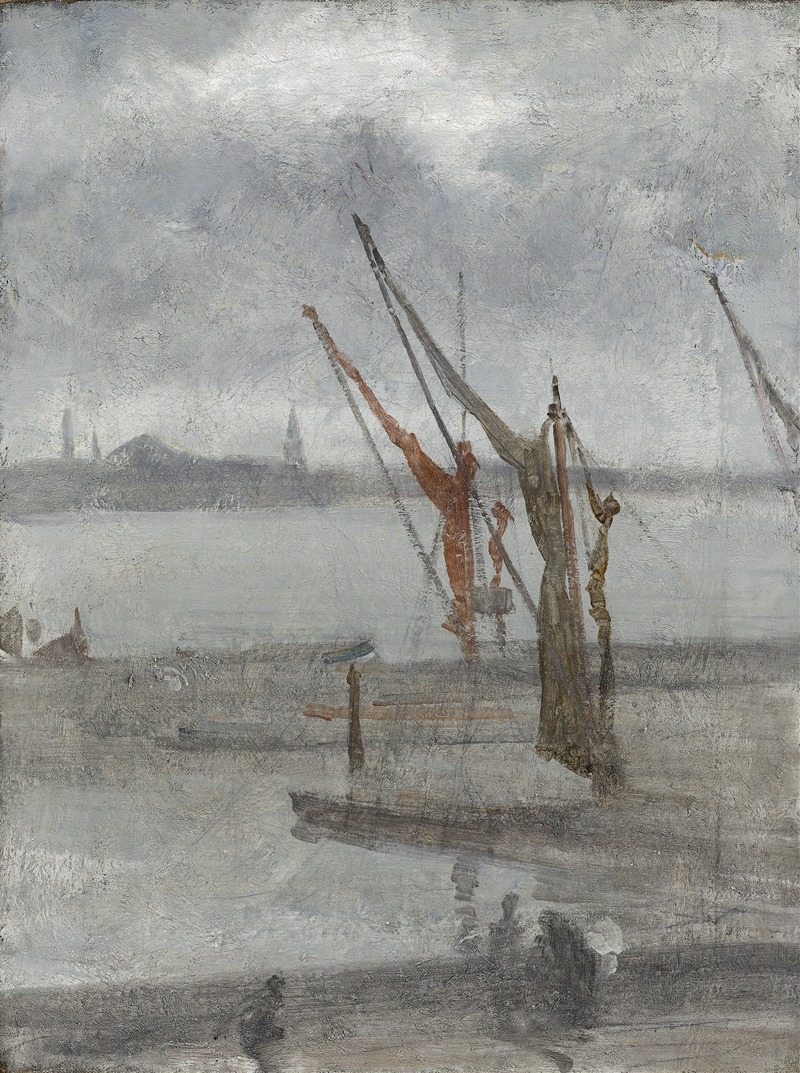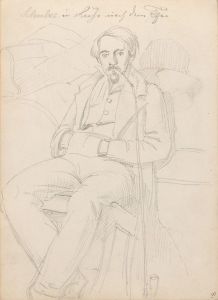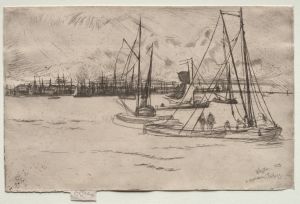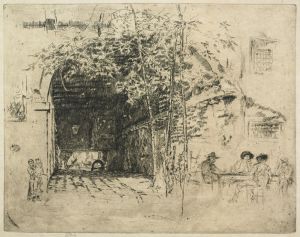
Grey and Silver – Chelsea Wharf
A hand-painted replica of James Abbott McNeill Whistler’s masterpiece Grey and Silver – Chelsea Wharf, meticulously crafted by professional artists to capture the true essence of the original. Each piece is created with museum-quality canvas and rare mineral pigments, carefully painted by experienced artists with delicate brushstrokes and rich, layered colors to perfectly recreate the texture of the original artwork. Unlike machine-printed reproductions, this hand-painted version brings the painting to life, infused with the artist’s emotions and skill in every stroke. Whether for personal collection or home decoration, it instantly elevates the artistic atmosphere of any space.
"Grey and Silver – Chelsea Wharf" is an oil painting created by the American-born artist James Abbott McNeill Whistler. Completed in 1864, the artwork is part of Whistler's exploration of tonal harmony and his interest in capturing atmospheric effects. The painting depicts a view of Chelsea Wharf, located along the River Thames in London, where Whistler lived and worked for much of his career.
The composition is characterized by its subdued palette, dominated by shades of grey and silver, which reflect Whistler's fascination with subtle tonal variations. The scene portrays the industrial and urban landscape of Chelsea, with warehouses, chimneys, and boats visible along the riverbank. Whistler's approach emphasizes mood and atmosphere over detailed representation, aligning with his broader artistic philosophy of "art for art's sake." This philosophy sought to prioritize aesthetic experience and formal qualities over narrative or moral content.
"Grey and Silver – Chelsea Wharf" is an example of Whistler's early experiments with the stylistic elements that would later define his "Nocturnes" series, a group of works focused on night scenes and twilight views of the Thames. While not a nocturne itself, the painting shares a similar emphasis on tonal harmony and the interplay of light and shadow.
The artwork is currently housed in the Tate collection in London, where it is recognized as an important example of Whistler's contribution to 19th-century art. Whistler's innovative techniques and his focus on mood and abstraction influenced later movements, including Impressionism and Symbolism.
This painting reflects Whistler's ability to transform an ordinary urban scene into a poetic and evocative composition, demonstrating his mastery of color and atmosphere.


















